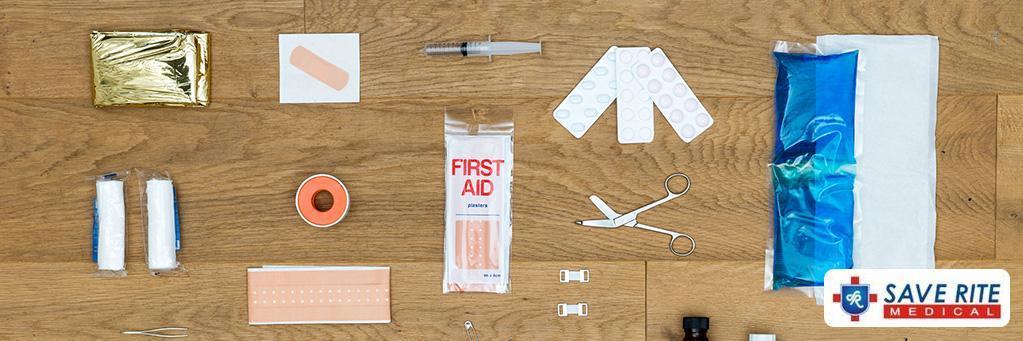
How to Properly Stock a Home First Aid Kit
|
|
Time to read 5 min
Need Assistance? Call us at +1 (866) 923-1544
|
|
Time to read 5 min
Whether it's hurricanes, bitterly cold winters, or blistering hot summers, our weather has become unpredictable. People can easily get injured thanks to extreme weather conditions.
And then there are the everyday emergencies like burns, cuts, and bruises.
While you can't control when an emergency happens, there are steps you can take to ensure an emergency doesn't turn tragic. One easy step you can take to protect you and your loved ones at home is to prepare a home first aid kit.
Making a first aid kit is easy. It just takes a little bit of planning and some knowhow. To help you get started, we're sharing with your the complete first aid checklist no home should be without.
Keep reading to learn how to prepare for the unexpected.
An emergency first aid kit is important to have in every home. You never know when someone may spill boiling water on themselves or slip and fall unexpectedly.
The more you're prepared, the easier it is to take action immediately. However, before you start making a first aid kit, here are some things you need to know.
Create a first aid checklist to ensure you don't forget anything. Keep the checklist in the kit so you can periodically check to see the kit is properly stocked.
Keep an up-to-date first aid manual in the kit. Everyone old enough in the household should also read the manual to ensure everyone knows how to properly apply first aid.
At least once a year, inspect your kit to replace missing or expired items. Check to make sure your batteries are still fresh.
Store the kit where adults can easily find and reach the kit but children cannot. Let everyone in your household, including all caregivers, know where to find your emergency first aid kit.
Making a first aid kit is easy. We're going to share with you exactly what to put in a first aid kit. It may make sense to print out this article to use as your first aid kit checklist.
There are a few categories of first aid kit supplies you'll need to stock up on. There are basic supplies like bandaids, medicines like ibuprofen, and emergency items like everyone's health history listed.
Let's go through each category. Make sure to stock enough for all members of your household. The following is based on a family of four.
Make sure to purchase a container in which to store all of these items to keep them safe and dry.
While most of the above items you can get in one section of your local pharmacy, you also need to remember a few extra supplies in case you lose heat and/or power.
You may want to also keep at least $40 in cash stored in your first aid kit. If the power goes out, cash is the only way to purchase items. Keep dower denominations on hand.
Always check to ensure your medications haven't expired or are otherwise unusable at least once a year. Avoid stocking anything a family member is allergic to so you can avoid any potential disasters.
If anyone in your family does suffer from allergies, make sure to include an auto-injector of epinephrine, if prescribed by your doctor.
If you have older family members, it's worth it to also stock aspirin in your first aid kit as well. It can help save their lives if they have chest pains. However, only stock aspirin if you know the family member isn't allergic and doesn't have bleeding problems.
You're not quite done yet in packing your first aid kit supplies. To ensure everything you need is in one place, add in these following items.
Include all emergency phone numbers. Make sure you've listed all contact numbers for each member of your family and their doctors. Also, have local emergency services numbers, including your emergency road service provider.
The poison helpline number which is 800-222-1222 should also be listed.
You should also include any medical history forms you have on each family member and medical consent forms for each member in your kit. Keep the originals somewhere safe, but keep copies on hand in case of an emergency.
If you or a family member has an illness, ask their physician about how to best handle their symptoms during an emergency, especially if you're without power for several days. If you can stock up on extra medications and supplies for that person.
While you may think that making a first aid kit will take a lot of time, it doesn't have to. We can help.
We have everyone in stock to help you create your own home first aid kit. Shopping with us is easy and you don't even need to leave your home.
Click here to sign up so you can stock up on supplies.
Sources
Disclaimer: The descriptions are for informational purposes only and should not be taken as medical advice.